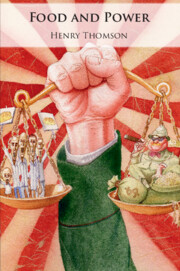Book contents
- Frontmatter
- Contents
- List of Figures
- List of Figures
- Acknowledgements
- 1 Introduction
- 2 Agricultural Policy, Regime Type, and Political Stability
- 3 Political Regime Type and Agricultural Policy Outcomes
- 4 Food Policy and Urban Unrest: A Global Analysis
- 5 Agricultural Rents, Landholding Inequality, and Authoritarian Regime Durability
- 6 Agricultural Policy and Authoritarian Regime Durability in Germany, 1878-1890
- 7 Agricultural Policy and Authoritarian Regime Durability in Malaysia, 1969-1980
- 8 Conclusion
- Bibliography
- Index
1 - Introduction
Published online by Cambridge University Press: 31 May 2019
- Frontmatter
- Contents
- List of Figures
- List of Figures
- Acknowledgements
- 1 Introduction
- 2 Agricultural Policy, Regime Type, and Political Stability
- 3 Political Regime Type and Agricultural Policy Outcomes
- 4 Food Policy and Urban Unrest: A Global Analysis
- 5 Agricultural Rents, Landholding Inequality, and Authoritarian Regime Durability
- 6 Agricultural Policy and Authoritarian Regime Durability in Germany, 1878-1890
- 7 Agricultural Policy and Authoritarian Regime Durability in Malaysia, 1969-1980
- 8 Conclusion
- Bibliography
- Index
Summary
The introduction lays out the scope and contribution of the book. I begin by arguing that the problem of agricultural policymaking plays a central role in debates on the relationship between development, democratization, and authoritarian politics. One of the most salient and contentious social cleavages to be managed in developing nations is not between the rich and the poor, or the middle class and the state. It is between cities and the countryside, and it plays itself out in markets for agricultural produce and food. I briefly outline the book’s central argument: that agricultural policies are a trade-off between rural interests, who prefer higher prices, and urban interests, who prefer lower prices. This trade-off is made under different rules depending on regime type, and in particular based on the structural threats posed to each sector under authoritarianism. By manipulating prices for agricultural commodities and food, authoritarian governments can co-opt threatening groups to supporting their regime and mitigate the risk of political instability. I outline the structure of the book's chapters.
Keywords
- Type
- Chapter
- Information
- Food and PowerRegime Type, Agricultural Policy, and Political Stability, pp. 1 - 21Publisher: Cambridge University PressPrint publication year: 2019



